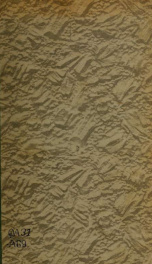Archimedes

Archimedes of Syracuse (Greek: Ἀρχιμήδης; c. 287 BC – c. 212 BC) was a Greek mathematician, physicist, engineer, inventor, and astronomer. Although few details of his life are known, he is regarded as one of the leading scientists in classical antiquity. Among his advances in physics are the foundations of hydrostatics, statics and the explanation of the principle of the lever. He is credited with designing innovative machines, including siege engines and the screw pump that bears his name. Modern experiments have tested claims that Archimedes designed machines capable of lifting attacking ships out of the water and setting ships on fire using an array of mirrors.[1] Archimedes is generally considered to be the greatest mathematician of antiquity and one of the greatest of all time.[2][3] He used the method of exhaustion to calculate the area under the arc of a parabola with the summation of an infinite series, and gave a remarkably accurate approximation of pi.[4] He also defined the spiral bearing his name, formulas for the volumes of surfaces of revolution and an ingenious system for expressing very large numbers. Archimedes died during the Siege of Syracuse when he was killed by a Roman soldier despite orders that he should not be harmed. Cicero describes visiting the tomb of Archimedes, which was surmounted by a sphere inscribed within a cylinder. Archimedes had proven that the sphere has two thirds of the volume and surface area of the cylinder (including the bases of the latter), and regarded this as the greatest of his mathematical achievements. Unlike his inventions, the mathematical writings of Archimedes were little known in antiquity. Mathematicians from Alexandria read and quoted him, but the first comprehensive compilation was not made until c. 530 AD by Isidore of Miletus, while commentaries on the works of Archimedes written by Eutocius in the sixth century AD opened them to wider readership for the first time. The relatively few copies of Archimedes' written work that survived through the Middle Ages were an influential source of ideas for scientists during the Renaissance,[5] while the discovery in 1906 of previously unknown works by Archimedes in the Archimedes Palimpsest has provided new insights into how he obtained mathematical results.[6] Archimedes was born c. 287 BC in the seaport city of Syracuse, Sicily, at that time a colony of Magna Graecia. The date of birth is based on a statement by the Byzantine Greek historian John Tzetzes that Archimedes lived for 75 years.[7] In The Sand Reckoner, Archimedes gives his father's name as Phidias, an astronomer about whom nothing is known. Plutarch wrote in his Parallel Lives that Archimedes was related to King Hiero II, the ruler of Syracuse.[8] A biography of Archimedes was written by his friend Heracleides but this work has been lost, leaving the details of his life obscure.[9] It is unknown, for instance, whether he ever married or had children. During his youth Archimedes may have studied in Alexandria, Egypt, where Conon of Samos and Eratosthenes of Cyrene were contemporaries. He referred to Conon of Samos as his friend, while two of his works (The Method of Mechanical Theorems and the Cattle Problem) have introductions addressed to Eratosthenes.[a] Archimedes died c. 212 BC during the Second Punic War, when Roman forces under General Marcus Claudius Marcellus captured the city of Syracuse after a two-year-long siege. According to the popular account given by Plutarch, Archimedes was contemplating a mathematical diagram when the city was captured. A Roman soldier commanded him to come and meet General Marcellus but he declined, saying that he had to finish working on the problem. The soldier was enraged by this, and killed Archimedes with his sword. Plutarch also gives a lesser-known account of the death of Archimedes which suggests that he may have been killed while attempting to surrender to a Roman soldier. According to this story, Archimedes was carrying mathematical instruments, and was killed because the soldier thought that they were valuable items. General Marcellus was reportedly angered by the death of Archimedes, as he considered him a valuable scientific asset and had ordered that he not be harmed.[10] The last words attributed to Archimedes are "Do not disturb my circles" (Greek: μή μου τούς κύκλους τάραττε), a reference to the circles in the mathematical drawing that he was supposedly studying when disturbed by the Roman soldier. This quote is often given in Latin as "Noli turbare circulos meos," but there is no reliable evidence that Archimedes uttered these words and they do not appear in the account given by Plutarch.[10] The tomb of Archimedes carried a sculpture illustrating his favorite mathematical proof, consisting of a sphere and a cylinder of the same height and diameter. Archimedes had proven that the volume and surface area of the sphere are two thirds that of the cylinder including its bases. In 75 BC, 137 years after his death, the Roman orator Cicero was serving as quaestor in Sicily. He had heard stories about the tomb of Archimedes, but none of the locals was able to give him the location. Eventually he found the tomb near the Agrigentine gate in Syracuse, in a neglected condition and overgrown with bushes. Cicero had the tomb cleaned up, and was able to see the carving and read some of the verses that had been added as an inscription.[11] The standard versions of the life of Archimedes were written long after his death by the historians of Ancient Rome. The account of the siege of Syracuse given by Polybius in his Universal History was written around seventy years after Archimedes' death, and was used subsequently as a source by Plutarch and Livy. It sheds little light on Archimedes as a person, and focuses on the war machines that he is said to have built in order to defend the city.[12] The most widely known anecdote about Archimedes tells of how he invented a method for determining the volume of an object with an irregular shape. According to Vitruvius, a new crown in the shape of a laurel wreath had been made for King Hiero II, and Archimedes was asked to determine whether it was of solid gold, or whether silver had been added by a dishonest goldsmith.[13] Archimedes had to solve the problem without damaging the crown, so he could not melt it down into a regularly shaped body in order to calculate its density. While taking a bath, he noticed that the level of the water in the tub rose as he got in, and realized that this effect could be used to determine the volume of the crown. For practical purposes water is incompressible,[14] so the submerged crown would displace an amount of water equal to its own volume. By dividing the weight of the crown by the volume of water displaced, the density of the crown could be obtained. This density would be lower than that of gold if cheaper and less dense metals had been added. Archimedes then took to the streets naked, so excited by his discovery that he had forgotten to dress, crying "Eureka!" (Greek: "εὕρηκα!," meaning "I have found it!")[15] The story of the golden crown does not appear in the known works of Archimedes. Moreover, the practicality of the method it describes has been called into question, due to the prohibitive amount of accuracy required in measuring the water displacement.[16] Archimedes may have instead sought a solution that applied the principle known in hydrostatics as Archimedes' Principle, which he describes in his treatise On Floating Bodies. This principle states that a body immersed in a fluid experiences a buoyant force equal to the weight of the fluid it displaces.[17] Using this principle, it would have been possible to compare the density of the golden crown to that of solid gold by balancing the crown on a scale with a gold reference sample, then immersing the apparatus in water. If the crown was less dense than gold, it would displace more water due to its larger volume, and thus experience a greater buoyant force than the reference sample. This difference in buoyancy would cause the scale to tip accordingly. Galileo considered it "probable that this method is the same that Archimedes followed, since, besides being very accurate, it is based on demonstrations found by Archimedes himself."[18] A large part of Archimedes' work in engineering arose from fulfilling the needs of his home city of Syracuse. The Greek writer Athenaeus of Naucratis described how King Hieron II commissioned Archimedes to design a huge ship, the Syracusia, which could be used for luxury travel, carrying supplies, and as a naval warship. The Syracusia is said to have been the largest ship built in classical antiquity.[19] According to Athenaeus, it was capable of carrying 600 people and included garden decorations, a gymnasium and a temple dedicated to the goddess Aphrodite among its facilities. Since a ship of this size would leak a considerable amount of water through the hull, the Archimedes screw was purportedly developed in order to remove the bilge water. Archimedes' machine was a device with a revolving screw-shaped blade inside a cylinder. It was turned by hand, and could also be used to transfer water from a low-lying body of water into irrigation canals. The Archimedes screw is still in use today for pumping liquids and granulated solids such as coal and grain. The Archimedes screw described in Roman times by Vitruvius may have been an improvement on a screw pump that was used to irrigate the Hanging Gardens of Babylon.[20][21][22] The Claw of Archimedes is a weapon that he is said to have designed in order to defend the city of Syracuse. Also known as "the ship shaker," the claw consisted of a crane-like arm from which a large metal grappling hook was suspended. When the claw was dropped onto an attacking ship the arm would swing upwards, lifting the ship out of the water and possibly sinking it. There have been modern experiments to test the feasibility of the claw, and in 2005 a television documentary entitled Superweapons of the Ancient World built a version of the claw and concluded that it was a workable device.[23][24]
do you like this author?
What readers are saying
What do you think? Write your own comment on this book!
write a commentWhat readers are saying
What do you think? Write your own comment on this author!
write a commentBook list

The Works of Archimedes
Series:
Unknown
Year:
Unknown
Raiting:
3/5
Book digitized by Google from the library of the University of Michigan and uploaded to the Internet Archive by user tpb.
Show more
add to favoritesadd In favorites

Geometrical solutions derived from mechanics, a treatise of Archimedes, recently discovered and tr. from the Greek
Series:
Unknown
Year:
Unknown
Raiting:
4/5
with an introduction by David Eugene Smith. English version tr. from the German, by Lydia G. Robinson
Show more
add to favoritesadd In favorites

The works of Archimedes
Series:
Unknown
Year:
Unknown
Raiting:
4.5/5
Introduction: I. Archimedes. II. Manuscripts and principal editions, order of composition, dialect, lost works. III. Relation of Archimedes to his predecessors. IV. Arithmetic in Archimedes. V. On the problems known as [neuseis] VI. Cubic equations. VII. Anticipations by Archimedes of the integral calculus. VIII. The terminology of Archimedes.--Works: On the sphere and cylinder, books I-II. Measurement of a circle. On conoids and spheroids. On spirals. On the equilibrium of planes, books I-II. The sand-reckoner. Quadrature of the parabola. On floating bodies, books I-II. Book of lemmas. The cattle-problem [including the solution of Wurm's problem by Amthor in Zeitschrift für math. u. phys. [Hist. litt. abth.] v. 25, 1880] List of the principal works consulted: p. [xi]-xii
Show more
add to favoritesadd In favorites
Book list

The Works of Archimedes
Series:
Unknown
Year:
Unknown
Raiting:
3/5
Book digitized by Google from the library of the University of Michigan and uploaded to the Internet Archive by user tpb.
Show more
add to favoritesadd In favorites

Geometrical solutions derived from mechanics, a treatise of Archimedes, recently discovered and tr. from the Greek
Series:
Unknown
Year:
Unknown
Raiting:
4/5
with an introduction by David Eugene Smith. English version tr. from the German, by Lydia G. Robinson
Show more
add to favoritesadd In favorites

The works of Archimedes
Series:
Unknown
Year:
Unknown
Raiting:
4.5/5
Introduction: I. Archimedes. II. Manuscripts and principal editions, order of composition, dialect, lost works. III. Relation of Archimedes to his predecessors. IV. Arithmetic in Archimedes. V. On the problems known as [neuseis] VI. Cubic equations. VII. Anticipations by Archimedes of the integral calculus. VIII. The terminology of Archimedes.--Works: On the sphere and cylinder, books I-II. Measurement of a circle. On conoids and spheroids. On spirals. On the equilibrium of planes, books I-II. The sand-reckoner. Quadrature of the parabola. On floating bodies, books I-II. Book of lemmas. The cattle-problem [including the solution of Wurm's problem by Amthor in Zeitschrift für math. u. phys. [Hist. litt. abth.] v. 25, 1880] List of the principal works consulted: p. [xi]-xii
Show more
add to favoritesadd In favorites

The Works of Archimedes
Series:
Unknown
Year:
Unknown
Raiting:
2.5/5
Book digitized by Google and uploaded to the Internet Archive by user tpb.
Show more
add to favoritesadd In favorites

Archimedis Opera omnia : cum commentariis Eutocii. E codice florentino recensuit
Series:
Unknown
Year:
Unknown
Raiting:
3.5/5
Book digitized by Google from the library of Harvard University and uploaded to the Internet Archive by user tpb.
Show more
add to favoritesadd In favorites

The Works of Archimedes
Series:
Unknown
Year:
Unknown
Raiting:
3.5/5
Book digitized by Google from the library of the University of Michigan and uploaded to the Internet Archive by user tpb.
Show more
add to favoritesadd In favorites

Opuscoli idraulici
Series:
Unknown
Year:
Unknown
Raiting:
3.5/5
Book digitized by Google from the library of the University of California and uploaded to the Internet Archive by user tpb.
Show more
add to favoritesadd In favorites

The method of Archimedes, recently discovered by Heiberg; a supplement to the Works of Archimedes, 1897
Series:
Unknown
Year:
Unknown
Raiting:
4.5/5
Show more
add to favoritesadd In favorites

Works
Series:
Unknown
Year:
Unknown
Raiting:
4/5
Book digitized by Google from the library of University of Michigan and uploaded to the Internet Archive by user tpb.
Show more
add to favoritesadd In favorites

The Method of Archimedes, recently discovered by Heiberg; a supplement to the Works of Archimedes, 1897
Series:
Unknown
Year:
Unknown
Raiting:
2.5/5
Show more
add to favoritesadd In favorites

Oeuvres d'Archimède
Series:
Unknown
Year:
Unknown
Raiting:
4/5
De le sphère et du cylindre.--De la mesure du cercle.--Des conoïdes et des sphéroïdes.--Des hélices.--De l'équilibre des plans ou de leurs centres de gravité.--De la quadrature de la parabole.--L'Arénaire.--Des corps qui sont portés sur un fluide.--Lemmes.--Commentaire.--Appendices: I. Miroir ardent, par le moyen duquel on peut réfléchir et fixer, sur un objet en repos ou en mouvenment, les rayons solaires, en aussi grande quantité que l'on veut [avec deux planches] par F. Peyrard. II. De l'arithmétique des Grecs, par M. Delambre
Show more
add to favoritesadd In favorites

Geometrical Solutions Derived from Mechanics; a Treatise of Archimedes
Series:
Unknown
Year:
Unknown
Raiting:
3.5/5
Originally published in 1909. This volume from the Cornell University Library's print collections was scanned on an APT BookScan and converted to JPG 2000 format by Kirtas Technologies. All titles scanned cover to cover and pages may include marks notations and other marginalia present in the original volume.
Show more
add to favoritesadd In favorites
What readers are saying
What do you think? Write your own comment on this author!
write a commentif you like Archimedes try:
readers also enjoyed
What readers are saying
What do you think? Write your own comment on this author!
write a commentGenre
if you like Archimedes try:
readers also enjoyed
Do you want to read a book that interests you? It’s EASY!
Create an account and send a request for reading to other users on the Webpage of the book!


